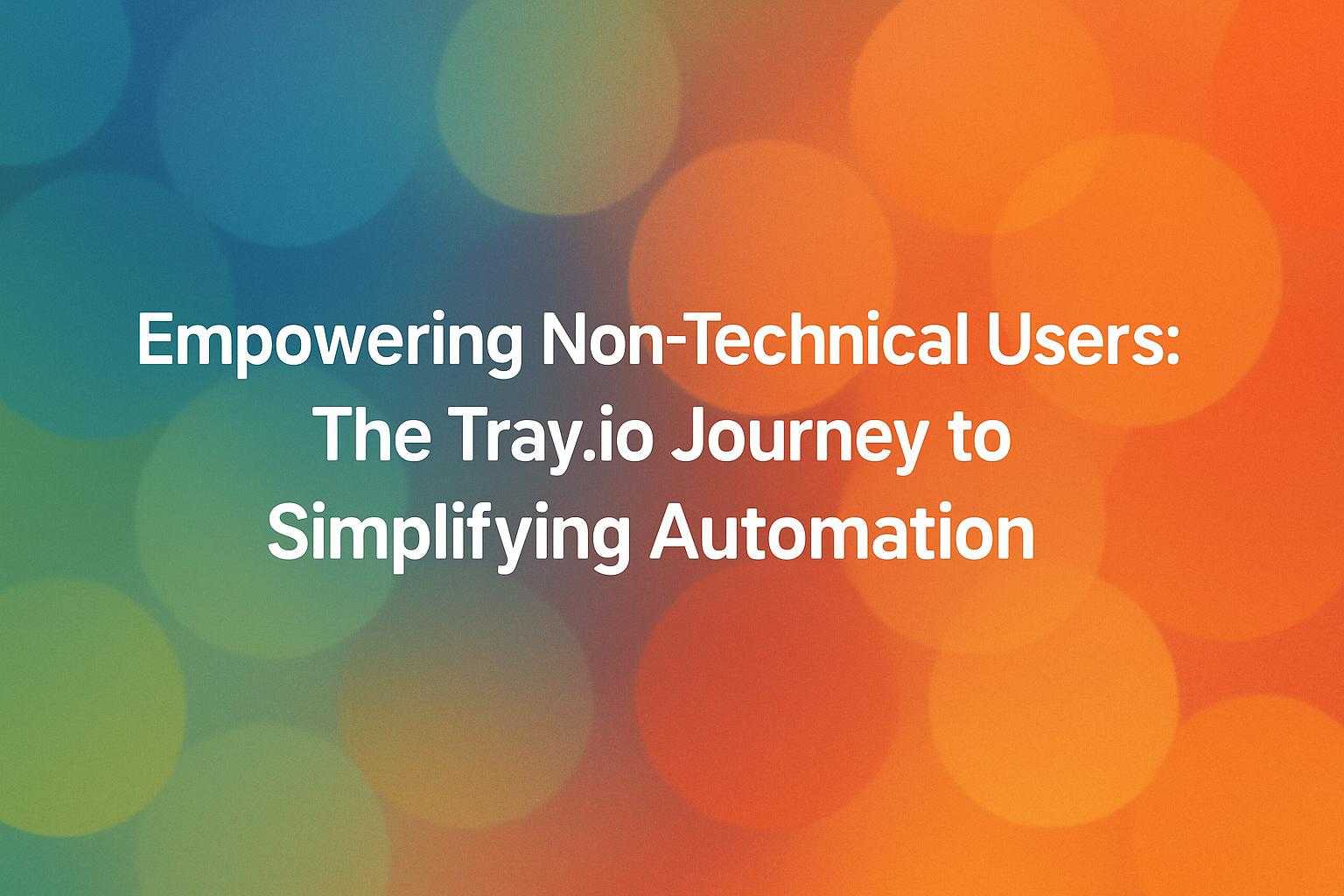Empowering Non-Technical Users: The Tray.io Journey to Simplifying Automation

Company profile
Company business details
Motivation to build the product
The founders were motivated by the need to empower non-technical users to leverage technology and automate their workflows without relying on engineers. They recognized that many users understood the business importance of tools but lacked the technical skills to maximize their usage.Problem that their product solves
Tray.io solves the problem of complex software integrations and workflow automation for non-technical users, such as product managers and knowledge workers. By enabling these users to create integrations and automate processes visually, it enhances their productivity and operational efficiency.Their unfair advantage
Tray.io's unfair advantage lies in its user-friendly interface and low-code capabilities, which democratize programming and allow users to solve their own problems without extensive technical knowledge.Strategies
Pre-Launch (Product Development & MVP)
API Accessibility for Non-Technical Users
In the early stages of trade.io, the founders recognized a gap in the market where less technical individuals struggled to utilize APIs effectively. They aimed to create a platform that would enable these users to harness the power of APIs without needing extensive technical knowledge. This involved developing a user-friendly interface that allowed users to configure and automate their existing tools, thus democratizing access to technology and making it more accessible to a broader audience.
Bootstrapping through eBay Sales
In the early days of Tray.io, Rich Waldron and his co-founders bootstrapped their business by selling Wellington boots on eBay. This unconventional approach not only provided them with initial funding but also allowed them to gain valuable insights into e-commerce and customer preferences. This hands-on experience helped them understand market dynamics and customer needs, which they later applied to their technology platform.
Launch Stage
Participating in Startup Accelerator Programs
Rich Waldron and his team joined various startup accelerator programs to refine their business model and gain mentorship. These programs provided them with critical resources, networking opportunities, and feedback from experienced entrepreneurs. This strategy was pivotal in helping them navigate the early challenges of launching Tray.io and establishing a product-market fit.
Customer-Centric Product Development
During the launch stage, trade.io focused heavily on customer feedback to refine their product. They engaged in numerous customer interviews and workshops to understand the specific needs and pain points of their users. This direct interaction allowed them to prioritize features and integrations that would provide the most value, ensuring that the product evolved in alignment with customer expectations and market demands.
Social Media Engagement
Enterprise Times leveraged social media platforms like Facebook, Twitter, and LinkedIn to promote their content and engage with their audience. They shared links to their articles, including the interview with Rich Waldron, across these platforms, encouraging followers to read and share the content. This strategy not only increased visibility for their articles but also fostered a community around their brand, allowing for direct interaction with their audience.
Learn more about Tray.io


A conversation with Rich Waldron, founder of Tray.io



